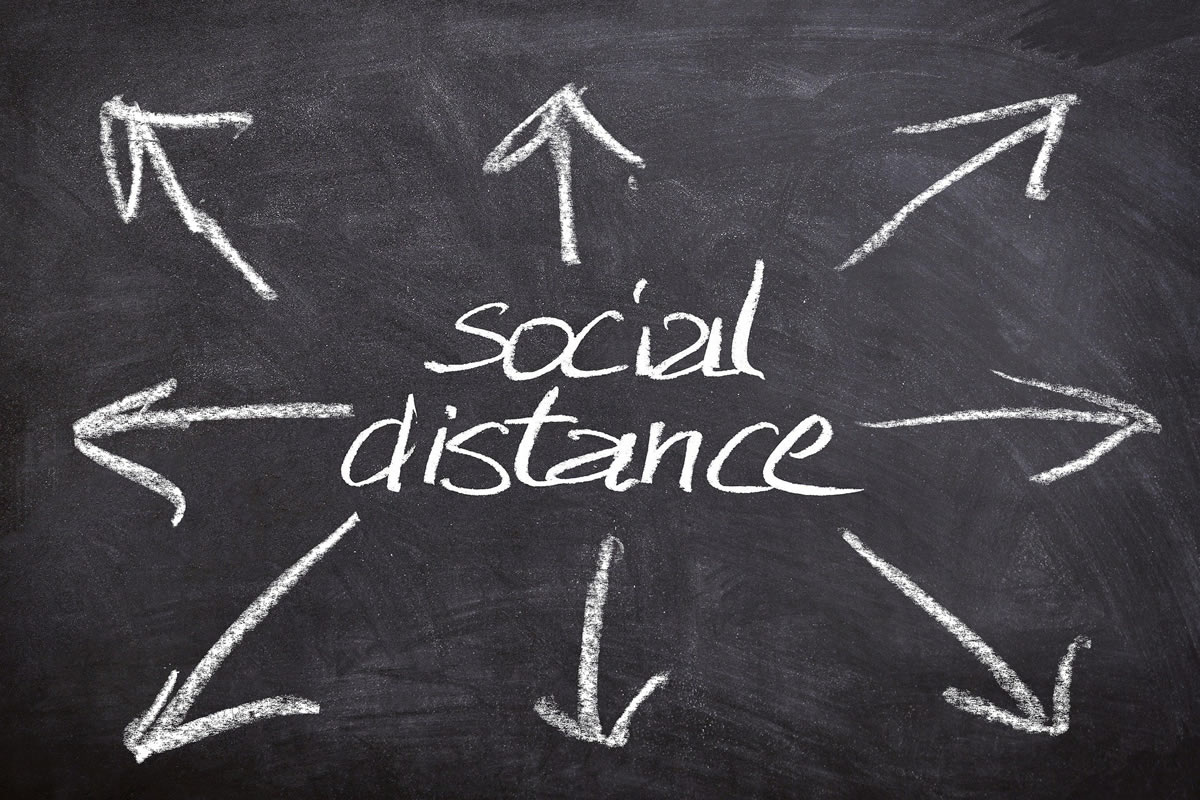The Coronavirus strain, also known as COVID-19, has significantly disrupted routine activities in locations across the globe. As more cases are reported, it’s become increasingly important for citizens to take proper measures to slow or prevent the spread of the virus. As of March 13, 2020, this included recommendations to cancel all events of over 250 people in Ontario, Alberta, British Columbia, and Manitoba, while Nova Scotia discourages events of over 150 people. This is all part of a process known as social distancing, which can help slow the spread of the virus.
What Is Social Distancing?
Social distancing is the practice of creating more space between individuals. This is a recommended strategy both for symptomatic and asymptomatic people, though the extent of the recommended social distancing varies by situation.
The Government of Canada recommends total isolation for those who are symptomatic and have a confirmed or suspected case of COVID-19. These individuals should do the following:
- Stay at home
- Have supplies delivered and left at the door
- Wear a mask and stay at least two meters away from others if absolutely required to leave the house
Those who do not have any symptoms should practice a preventive form of social distancing. This includes:
- Staying 2 meters away from others in public settings
- Limiting exposure to other people in public to 10 minutes or less
- Avoiding any nonessential travel
- Avoiding large crowds, particularly those of 250 or more
- Refraining from handshakes, hugs, and other forms of physical contact
- Using drive-through, pickup, and delivery options rather than dining or shopping in public locations
Travel should be limited as much as possible during this time. If you leave the country, the Government of Canada recommends that you self-isolate for 14 days upon your return and monitor your health. Watch for fever, cough, or difficulty breathing, symptoms that can indicate the Coronavirus. If you experience these symptoms, you should call a health care professional, describe your symptoms, and follow the instructions given to you.
Why Is Social Distancing Important?
Social distancing helps to stop the spread of the Coronavirus, which is transmitted primarily through close contact with someone who has symptoms. Coughing and sneezing produce airborne particles that can infect others standing in close proximity. It’s estimated that these particles can travel about 2 meters from the individual, which is why the government recommends people stay at least this far apart.
Social distancing also limits the size of social gatherings so that when cases of Coronavirus do occur, they’re limited to smaller outbreaks. This is known as flattening the curve. Keeping individuals away from one another will significantly slow the spread of the disease. This makes it possible for hospitals and other healthcare facilities to better serve those who are suffering from COVID-19.
The World Health Organization indicates that healthcare systems should have five hospital beds per 1,000 individuals to deliver reasonable care in the face of a COVID-19 outbreak. However, as of 2018, Canada had an average of just 2.5 hospital beds per 1,000 people.
Ontario’s numbers are even lower, at just 2.3 beds per 1,000 people. The number of acute care hospital beds in Ontario is just 1.4 per 1,000 people. The number of acute care beds in the province has remained relatively stable over the last 20 years, though the population has increased by 3 million people.
These numbers highlight the crucial importance of flattening the curve. If too many people are infected at one time, the health care system will be easily overwhelmed, unable to treat everyone. Social distancing will slow the spread of COVID-19 and make it easier for health care providers to serve those who do become infected. In addition, those who maintain proper health habits and continue to practice social distancing can significantly decrease their chances of infection.
When Do We Need to Practice Social Distancing?
It’s important to practice social distancing as soon as possible. As of March 16, 2020, Canada had 324 confirmed cases of COVID-19 and 17 presumptive cases. A total of four deaths had been linked to the virus, all of which were recorded in British Columbia. On March 17, the first death of a patient with COVID-19 in Ontario was confirmed.
On March 17, Ontario Premier Doug Ford declared a state of emergency, closing all private schools, daycare, restaurants, bars, public libraries, and cinemas through March 30. Prime Minister Justin Trudeau announced the closure of Parks Canada parks and visitor sites.
Social distancing is particularly important for those who are at a higher risk. This includes individuals who are elderly or have compromised immune systems. They should begin following stricter steps to enact social distancing, such as avoiding all unnecessary public contact. This may include actions such as ordering groceries and other necessities and having them left at the door and maintaining social contact by telephone or the internet rather than in person.
Social distancing is a practice that all Canadians can take to help protect themselves and others from the rapid spread of COVID-19. Mindful measures now can make a significant difference in the development of this outbreak.





 December is finally here, and if you’re not already hyped about the holidays, you’re about to […]
December is finally here, and if you’re not already hyped about the holidays, you’re about to […]
